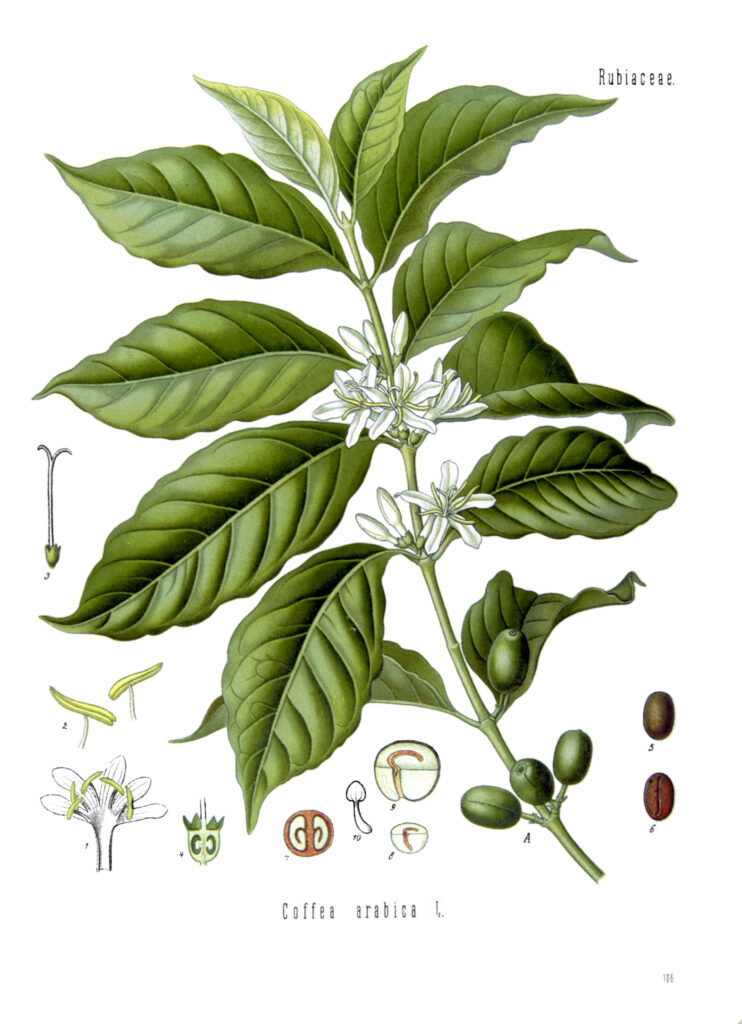Arabica coffee beans are considered the world’s highest-quality coffee beans. They are known for their sweet and delicate flavour, as well as their smooth and complex aromas. These beans are grown in various regions around the world, but they are most commonly associated with Central and South America, as well as parts of Africa and the Middle East.
The Arabica coffee plant is a Coffea species native to the mountains of Yemen and Ethiopia (Ethiopian coffee beans are typically from the Coffea Arabica plant. Read about the history of Ethiopian coffee beans). It is believed to be the first species of coffee to be cultivated and consumed, with a history that dates back to the 9th century. The plant is small, usually growing to a height of around 30 feet, and it produces small, oval-shaped berries containing coffee beans.
One of the most distinctive characteristics of Arabica coffee beans is their flavour profile. These beans are known for their sweetness and delicate taste, resulting from their low acidity and higher levels of sugars and oils. They also have a complex and nuanced aroma, with notes of fruit, nuts, chocolate, and even flowers.
Regarding cultivation, Arabica coffee plants are more demanding than their Robusta counterparts. They require specific growing conditions, including a high altitude, a particular temperature range, and plenty of shade. These plants are also more susceptible to pests and diseases, which can impact the quality of the beans. As a result, Arabica coffee tends to be more expensive than Robusta, which is more resilient and easier to grow.
Despite their reputation for being high-maintenance, Arabica coffee plants are grown in a variety of regions around the world. In Central and South America, countries such as Colombia, Costa Rica, and Brazil are known for producing some of the highest-quality Arabica beans. In Africa, Ethiopia and Kenya are major producers, while in the Middle East, countries such as Yemen and Saudi Arabia also cultivate these beans.
In terms of processing, two main methods are used to extract the coffee beans from the berries: wet and dry processing. Wet processing involves using water to remove the outer layers of the berry, including the skin, pulp, and mucilage. This method is more labour-intensive and time-consuming, resulting in a cleaner and more consistent flavour profile. On the other hand, dry processing involves allowing the berries to dry in the sun before removing the outer layers and separating the beans. This method is faster and easier, but it can result in a less consistent flavour and a higher risk of contamination.
When brewing Arabica coffee, there are a few key factors to consider. The first is the roast level, which refers to how long the beans have been roasted. Light roast Arabica beans will have a more acidic and brighter flavour, while dark roast beans will be richer and more intense. It is also essential to use the right grind size for the brewing method being used. A finer grind is generally better for espresso, while a coarser grind is better for drip coffee.
Regarding health benefits, Arabica coffee has been linked to several potential benefits, including a lower risk of type 2 diabetes, Parkinson’s disease, and some types of cancer. However, it is important to note that these potential benefits are largely based on observational studies, and more research is needed to confirm these findings. Additionally, coffee can negatively affect some individuals, such as those who are sensitive to caffeine or have acid reflux.
In conclusion, Arabica coffee beans are considered the world’s highest-quality coffee beans. They are known for their sweet, delicate flavour and complex aroma, and they are grown in a variety of regions around the world.
Read more coffee terms.
You can buy Arabica coffee beans directly from Flabbergasted.

